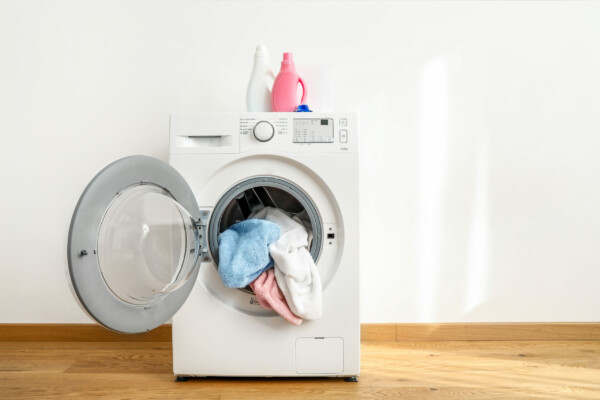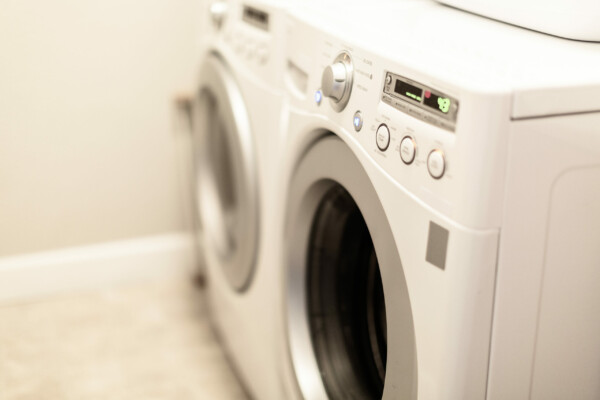Understanding and Resolving Dryer Condensation Issues
Dryer condensation is a common problem that many homeowners face, especially during certain seasons or in humid climates. This article is for everyone tired of constantly seeing condensation on dryer door and keep asking themselves, ‘Why is my dryer wet inside?’. It is essential to address this issue promptly to ensure its optimal performance and prevent potential safety risks.
What Causes Condensation?
Dryer condensation occurs when the air inside the drum cools down, causing the water vapor to condense on metal surfaces. Several factors can contribute to this issue:
- Insufficient venting: If the device’s vent system is blocked, damaged, or too long, so it can’t sustain the proper airflow.
- High humidity levels: It is highly likely to see moisture in dryer on humid days as the air already contains a substantial amount of tiny water droplets. Such conditions make it much more challenging to draw out the excessive liquid generated during the drying cycle. The same goes for dealing with condensation in dryer during summer.
- Faulty components: A malfunctioning heating element, thermostat, or moisture sensor can cause the device to operate inefficiently, leading to the dryer not venting moisture properly.
- Overloading: Placing too many clothes or other textile items into the dryer can overstrain its capacity, causing condensation to build up inside the drum.
This is not an exhaustive list, as there may be other reasons why a dryer may fail to stay condensation-free. But we’ve covered the most typical ones, occurring in around nine instances out of ten.
Is Condensation in Dryer Dangerous?
One may wonder what harm a few water drops cause. Well, condensation itself is not inherently dangerous, but it can lead to other issues if left unaddressed. Here are the most common problems caused by excess moisture:
- Mold spreading. A moist and warm environment inside a dryer is a perfect living space for mildew and fungus, coming as a package deal with pulmonary diseases, foul odors, and ruined garments.
- Poor electrical safety. Extended exposure to water causes rust and corrosion to spread, damaging the appliance’s electrical systems. This may lead to short-circuit faults and other severe safety hazards.
- Moisture in dryer tends to accumulate over time and form impactful water deposits. That water eventually finds its way outside and results in severe damage to the floor, walls, furniture, and other objects nearby, necessitating costly repairs or replacements.
- The presence of tumble dryer condensation hinders the dryer’s work, prolongs its operation cycle, amplifies energy usage, and inflates utility expenses.
Although there’s no direct danger to human health, condensation can significantly disrupt your household environment. It’s a comparatively minor problem, but still one that needs to be addressed as soon as possible.
Signs of Dryer Condensation Problems
If you have noticed any of the following signs, it may indicate a condensation issue:
- There is visible moisture or water droplets on the exterior of the device or the door, making you wonder, “Why is my dryer sweating?”
- Dryer lint is wet: The lint trapped in the filter or vent constantly feels wet to the touch.
- Dryer humidity problem: Clothes feel damp even after a full drying cycle.
- Musty or mildew odors come from the appliance or your freshly dried clothes.
Pay attention to all these aspects that directly indicate the presence of the problem.
How to Fix Condensation in Dryer
Addressing dryer condensation issues can involve several steps, depending on the underlying cause:
- Begin by examining and cleaning the dryer’s exhaust vent system, eliminating any lint accumulation, blockages, or twists hindering airflow. Verify proper installation and ensure that venting openings aren’t blocked.
- Should suspicion arise regarding faulty heating elements, thermostats, or sensors, refer to the manual or seek assistance from professional appliance repair services for inspection and potential replacement.
- Consider installing a dehumidifier or air conditioner in the laundry room to decrease overall moisture levels.
- Experiment with settings, adjusting temperature, or prolonging drying durations. Refrain from overloading the dryer to sustain optimal airflow.
- If applicable, consider installing a condensation drain kit, which will redirect surplus water away from the dryer.
- Persistent condensation-related issues may also indicate that it is time to upgrade to a more modern, efficient device.
These steps are more recommendations, as there is no ultimate remedy applicable to every case. At times, you will need to consult a certified technician to address the problem. Every brand has its own verified service centers you can reach out to — in some cases, even for free.
Preventive Measures to Reduce Condensation
To minimize the risk of tumble dryer condensation and maintain your appliance’s optimal performance, consider implementing the following preventive measures:
- Maintain a routine: After each cycle, clear the lint filter and arrange for professional vent system maintenance annually to prevent dirt deposits from causing clogging.
- Use laundry balls: These little helpers are great at enhancing air circulation within the dryer drum, which is a notable aid when dealing with dryer condensation issues.
- Keep tabs on humidity: Get a hygrometer to monitor humidity levels in your laundry area, and take necessary measures (like operating a dehumidifier) when levels surge.
Always follow the manufacturer’s advice for appropriate usage, upkeep, and troubleshooting specified for your specific model.
Conclusion
By understanding the causes and taking proactive steps to address dryer condensation, you can ensure your appliance operates efficiently, prolong its lifespan, and create a safer and more comfortable living environment.
Date of page creation: March 03, 2024
Page update date: March 20, 2024
Ask a Question



